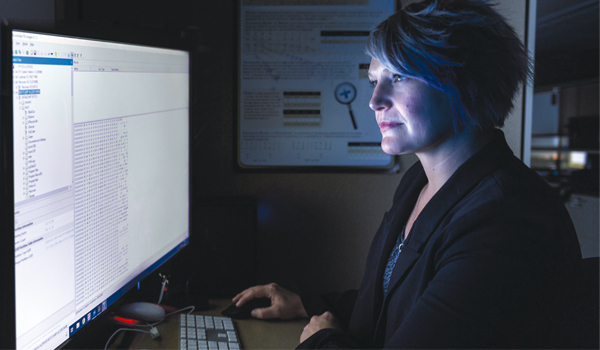From algorithms to verdicts
Simon Randall examines the role of AI in modernising the justice system.
Modernising the justice system with artificial intelligence (AI) and technology is a bold endeavour, and two key areas driving this transformation are video redaction and biotechnology. By harnessing the power of AI and cutting-edge biotech innovations, the justice system can become more efficient, transparent, and equitable.
Video redaction is a critical tool in the digital world, particularly in the context of law enforcement and court proceedings. With the proliferation of surveillance cameras and body-worn cameras, the volume of video evidence entering the justice system has skyrocketed. However, this influx of footage brings with it challenges related to privacy, confidentiality, and the protection of sensitive information.
AI-powered video redaction tools, such as Secure Redact, offer a solution to these challenges by automatically detecting and blurring or masking personally identifiable information, such as faces, license plates, and sensitive information, like documents on screens, in video recordings. This not only helps to protect the privacy rights of individuals but also ensures compliance with data protection regulations.
Video redaction technology enhances efficiency by automating a process that would otherwise be time-consuming. What might take staff members hours or even days to accomplish can be completed in a fraction of the time with AI algorithms, freeing up resources for other critical tasks within the justice system. Redacted videos also help maintain the integrity of the justice system by presenting evidence in a fair and impartial manner. This is especially important in high-profile cases where public perception can impact the outcome. For example, in California there has been pressure to push for the obfuscation of all visual and audio cues that would signal someone’s race, to further remove biases from the processing of case file videos.
Biotechnology is another frontier in the modernisation of the justice system, with applications ranging from forensic analysis to biometric identification. DNA analysis, for example, has revolutionised criminal investigations, enabling law enforcement to identify suspects, exonerate the innocent, and secure convictions with unprecedented accuracy. In today’s society, we face new challenges and risks to individuals with the rise of ‘deep fake’ imagery and the use of biometric data for illegal activities. There’s a need to restore trust and for privacy systems to authenticate and process content quickly and efficiently in order for the justice system to progress.
Furthermore, biometric identification technologies such as fingerprint and facial recognition are becoming increasingly sophisticated, offering new tools for verifying identities and enhancing security within the justice system. From access control in courthouses to management in correctional facilities, biometrics are transforming the way we ensure accountability and maintain safety.
The modernisation of the justice system with AI and technology holds immense promise for improving efficiency, transparency, and accountability. Video redaction tools powered by AI enable the protection of privacy rights and streamline the handling of digital evidence, while biotechnology enhances forensic analysis and strengthens security measures.
Video redaction keeps those who work to uphold justice accountable for their actions, making it simple to responsibly share body worn camera footage with law enforcement, which provides more transparency on their activities.
• The Modernising Criminal Justice Conference is being held on June 6 at the Queen Elizabeth II Centre in London. https://www.modernising-justice.co.uk/
Simon Randall is the CEO and co-founder of Pimloc, an AI company changing how global organisations can responsibly manage video content while maintaining public trust.
Before Pimloc, he led the OMG Life team to develop and launch the world’s first intelligent wearable camera and its associated technology platform licensing, before spinning out the visual classification side of the business to create Pimloc in 2017. He previously led global technology and market development teams across London, Sydney and Istanbul for organisations including Nokia, and managed the development and launch of a range of innovative devices and services for consumer and business markets.





